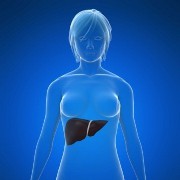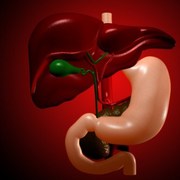 Photo: Getty Images
Photo: Getty Images
Recently I had the opportunity to listen to a lecture by Dr. Michael Pistole, one of the leading gastroenterologist treating cirrhosis and liver cancers. The liver is responsible for so many functions and is supportive to many of our organ systems.
Some primary functions are related to digestion and release of nutrients in the body, storing extra glucose and other nutrients and releasing them into the bloodstream when appropriate, handling of toxins and rendering them harmless to the body, collection and disposal of certain hormones, production and elimination of cholesterol and blood cells just to name a few. The liver has an added ability to regenerate itself when it gets damaged more readily than other organs.
Cirrhosis of the liver is defined as a slowly progressing disease which scar tissue replaces healthy tissues. As the scar tissue becomes more abundant in the liver it interrupts normal function and the normal blood flow through the liver, and the functions of the liver can no longer appropriately take place.
Some of the main causes for cirrhosis are alcohol abuse, fatty liver, and hepatitis C. According the National Institutes of Health, National Institute of Diabetes, and Digestive and Kidney Diseases, obesity is becoming one of the major causes of cirrhosis. The extra fat in the body begins to accumulates in the liver creating nonalcoholic fatty liver disease.
Since cirrhosis is a slow progressing disease symptoms may vary in severity depending on how much the liver has been affected. Symptoms may include fatigue, sometimes to the point of exhaustion, loss of appetite, yellowing of the skin or the eyeballs, weight loss or weight gain, itchy skin, swelling in the legs or ankles, light colored stool and mental changes or disorientation.
If cirrhosis is caught in the early stages the damage could be minimized or even reversed. There are several drug therapies for patients with cirrhosis. There are also alternative methods for support with a qualified naturopathic physician. In the late stages of cirrhosis a patient may have a higher risk of liver disease or require a liver transplant.
Cirrhosis can be diagnosed by physical exam, blood tests or diagnostic imaging like CT scan, ultrasound liver scan. The sooner a problem is diagnosed the sooner treatment can begin. Food always creates the foundation for any good treatment plan. Naturopathic support begins with nutrition. For food lifestyles that support the liver check out my book, Daelicious! Recipes for Vibrant Living.
Sources:
http://health.nih.gov/topic/Cirrhosis
http://www.mayoclinic.com/health/cirrhosis/DS00373
Reviewed July 20, 2011
by Michele Blacksberg R.N.
Edited by Shannon Koehle
Live Vibrantly,
Dr. Dae's website: www.healthydaes.com
Dr. Dae's book: Daelicious! Recipes for Vibrant Living can be purchased @ www.healthydaes.com
Dr. Dae's Bio:
“Dr. Dae" (pronounced Dr. Day) Daemon Jones is a Naturopathic Physician who treats the whole person using safe and effective combinations of traditional and natural methods to produce optimal health and well-being in the lives of her patients.






Add a CommentComments
There are no comments yet. Be the first one and get the conversation started!